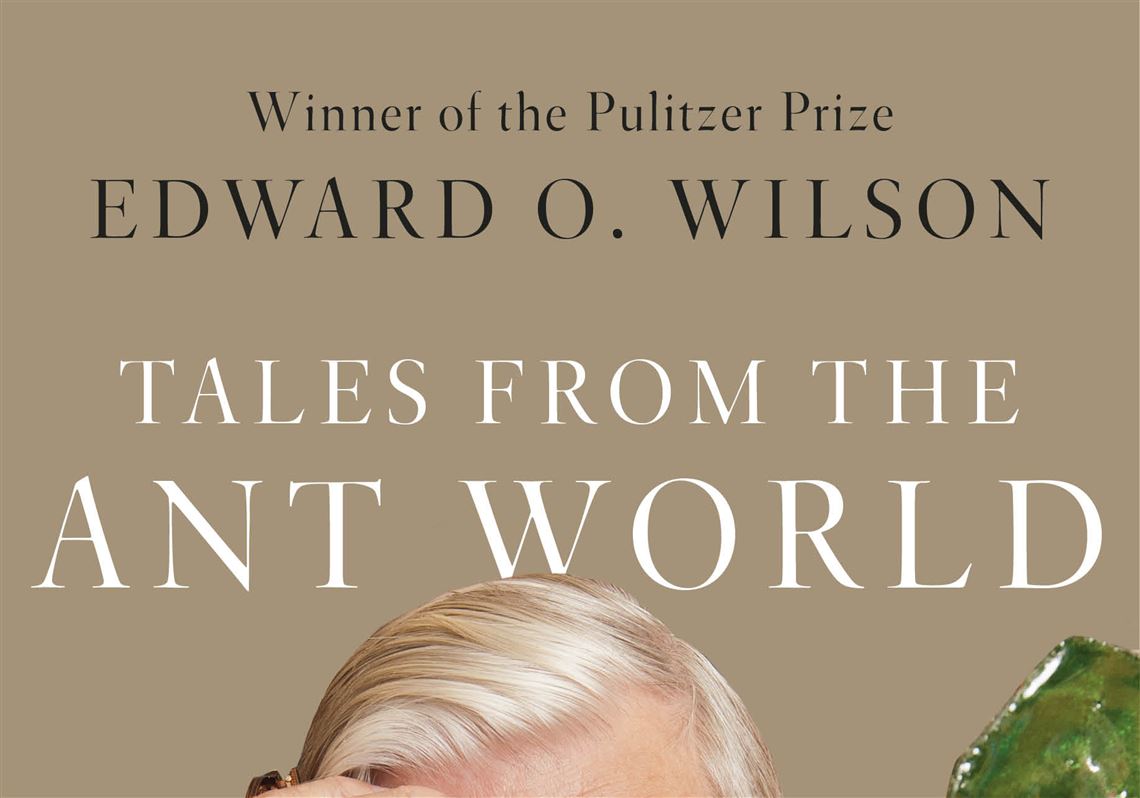“TALES FROM THE ANT WORLD”
By Edward O. Wilson
Liveright ($26.95)
Part autobiography, part travelogue, part adventure tale, part catalogue of scientific discoveries, part paean to nature, “Tales From The Ant World” by Edward O. Wilson (Liveright, $26.95) resists simple categorization. It is all the richer a read for it.
Mr. Wilson shares his passion for, and expertise in, myrmecology through 26 brief, clear and compelling chapters. Need one be an ant expert, scientist or scholar to enjoy them? Hardly. A bit of interest in the natural world and an ear for enthusiastic storytelling should suffice as prerequisites.
In examining his own life’s journey, Mr. Wilson charts a “peregrine existence” which leads to his “attend[ing] fifteen schools in sixteen towns and cities in three states plus the District of Columbia.” Rather than focusing on the difficulties this assuredly caused him, Mr. Wilson celebrates connecting with Nature more often than struggling to keep making new friends. Moving so frequently with his father and stepmother, he revels in the gifts of varied terrain from which to discover, learn and record findings. Not only does he find his career path in such independent studies, as a 13-year-old scouring a vacant lot in Mobile, Alabama he registers the first sighting in the northern hemisphere of a species of invasive fire ants.
His foundational work through his undergraduate education at the University of Alabama spans the first six chapters. Readers interested in a deeper dive into Mr. Wilson’s personal story would do well to investigate his memoir “Naturalist.” For the rest of these “Tales,” Mr. Wilson shares his experiences traveling the Earth to study ants. From aggressive, hornet-like bull ants in Australia to leaf-cutting ants that grow fungus gardens in the Amazon to an ant species once thought to be extinct on the tiny island group of L’Ile-des-Pins near New Caledonia in the Pacific, Mr. Wilson’s insects-of-scholarly-choice inspire compelling journeys. He fluidly intertwines descriptions of common and more exotic locales with details of how various ant species have adapted and now flourish in such settings. He also generously, and properly, credits his many collaborators, student assistants and predecessors in this research. Rarely are any of his most astounding discoveries made alone.
So, why should anyone care? Through Mr. Wilson’s eyes, we learn how ants “run the world,” providing “stability in almost all the terrestrial ecosystems of the planet.” Considering that these insects have inhabited Earth for 150 million years, they also offer valuable lessons on how they, and other forms of life, have evolved. Their abundance and variety offer a host of learning opportunities for researchers, be they out to discover and name new species or dig into the how and why of colony construction, movement, or warring with rivals. Finally, in his chapter about the rediscovery of the thought-to-be-extinct Myrmecia apicalis, Mr. Wilson reminds humans that we play a vital role in protecting or destroying endangered species.
At age 91, recording his words longhand since he does not type, Wilson proves himself no relic. Here is a thoughtful man attuned with nature, boundless in curiosity, eager to share insights that could simply be the province of academics with any interested reader. The creatures he studies are physically small, but they inspire great thought.
John Young teaches seventh grade language arts and plays in the rock band The Optimists.
First Published: November 16, 2020, 6:09 a.m.
















